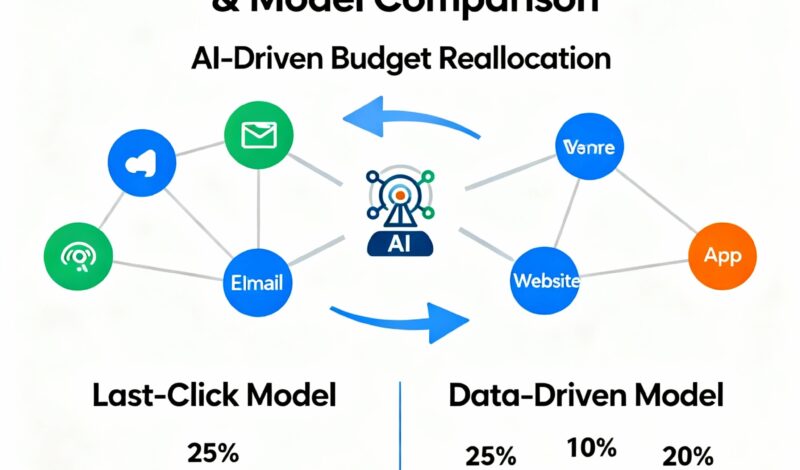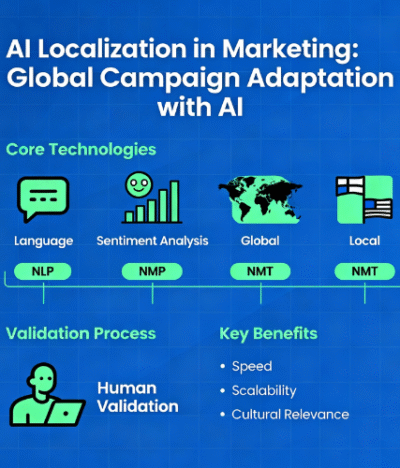The Problem with Traditional Budget Attribution
Modern marketing happens across dozens of touchpoints — search, social, email, video, and more. However, many brands still struggle to measure performance accurately because they lack effective AI Budget Attribution systems.
Most marketers continue relying on outdated attribution models like “last click,” which oversimplify complex customer journeys. These traditional methods fail to show how each channel contributes to conversions over time. As a result, budgets are often misallocated — overinvesting in top-of-funnel ads or underfunding nurturing campaigns.
This is where AI Budget Attribution changes the game — using Artificial Intelligence to analyze cross-channel data, uncover true ROI, and guide smarter spending decisions.
How AI Transforms Budget Attribution
AI enables marketers to move beyond simple click-based models by analyzing multi-channel customer behavior. Instead of assigning all credit to one touchpoint, AI evaluates the combined influence of every interaction that leads to a conversion.
AI models consider:
- Engagement patterns: How customers interact across platforms before purchase
- Conversion probability: Which channel combinations most often lead to sales
- Customer value: Which sources bring long-term, high-value customers
- Timing and sequence: When and how often each touchpoint occurs in the journey
By learning from large data sets, AI continuously improves attribution accuracy — making it possible to allocate budgets where they truly deliver impact.
Key Benefits of AI Budget Attribution
- Holistic View of the Customer Journey
AI gives a complete picture of how every channel — from awareness to conversion — works together. This helps marketers understand true performance rather than isolated metrics. - Smarter Budget Allocation
Instead of relying on assumptions, AI automatically redistributes budgets toward the most effective touchpoints. For example, if video ads drive higher retention than banner ads, AI will recommend shifting more spend there. - Dynamic Optimization
AI operates in real time. As campaign data evolves, it instantly updates attribution insights and rebalances ad spend accordingly. - Better ROI and Reduced Wastage
By investing in high-performing paths, marketers can cut underperforming spend and maximize overall ROI.
Example: Multi-Channel Retail Campaign
A global retail brand used AI-driven attribution to analyze their ad spend across Google, Meta, and email. Traditional models credited most sales to paid search.
But AI revealed that email re-engagement and remarketing ads played key roles before final purchase. After redistributing 25% of the budget to nurturing campaigns, the brand saw a 35% lift in overall conversion value and a 20% improvement in ROAS.
The insight? AI uncovers the hidden value of supporting channels that drive long-term success.
How AI Attribution Works Behind the Scenes
AI models use several methods to deliver accurate insights:
- Shapley Value Modeling: Quantifies each channel’s contribution to a conversion.
- Markov Chains: Evaluates how removing a channel affects the overall journey.
- Predictive Analytics: Forecasts performance if budgets shift.
- Reinforcement Learning: Continuously tests and adjusts allocation strategies.
These methods create an adaptive system that learns from every campaign cycle, improving precision over time.
Tools That Power AI Budget Attribution
Several marketing platforms already integrate AI-based attribution features:
- Google Ads Data-Driven Attribution – Uses machine learning to distribute credit across touchpoints.
- HubSpot Attribution Reporting – Tracks influence across organic and paid sources.
- Adobe Sensei & Salesforce Einstein – Offer enterprise-level AI modeling for complex campaigns.
Integrating these tools helps unify data from various channels into one source of truth.
Challenges and How to Overcome Them
Implementing AI budget attribution can face a few hurdles:
- Data Silos: Combine analytics, CRM, and ad data for a complete view.
- Privacy Regulations: Use privacy-compliant tracking methods and anonymized data.
- Interpretation Complexity: Train marketing teams to read AI insights and apply them effectively.
Overcoming these challenges allows teams to make faster, more confident, and data-backed decisions.
The Future of AI Budget Attribution
The next wave of AI budget attribution will be fully automated — capable of allocating spend across channels in real time without human intervention.
Imagine an AI system that learns continuously, detects campaign fatigue, identifies new trends, and reallocates budgets instantly to maintain performance. That’s where marketing is headed.
Brands that adopt AI-driven attribution today will enjoy higher efficiency, improved ROI, and a lasting competitive edge.
Conclusion
In a world where customer journeys are complex and ever-changing, AI budget attribution offers the clarity marketers have been missing.
By accurately measuring each channel’s contribution and optimizing spend dynamically, AI helps brands invest smarter — not just spend more. The result is simple: stronger ROI, better decisions, and marketing that truly performs.




